Grapes (Vitis sp.) belong to the Vitaceae family. It is the commercially important fruit crop of India. Grapes are a significant source of global fruit production, accounting for about 16%. Grapes climbing vines with tendrils will need the help of trellis, posts, and wires or work well against a sunny wall. Fruits need a lot of sunshine to ripen. Pruning as a cordon-trained bull increases productivity and saves space. Let’s check out the steps to boost Grape yield.
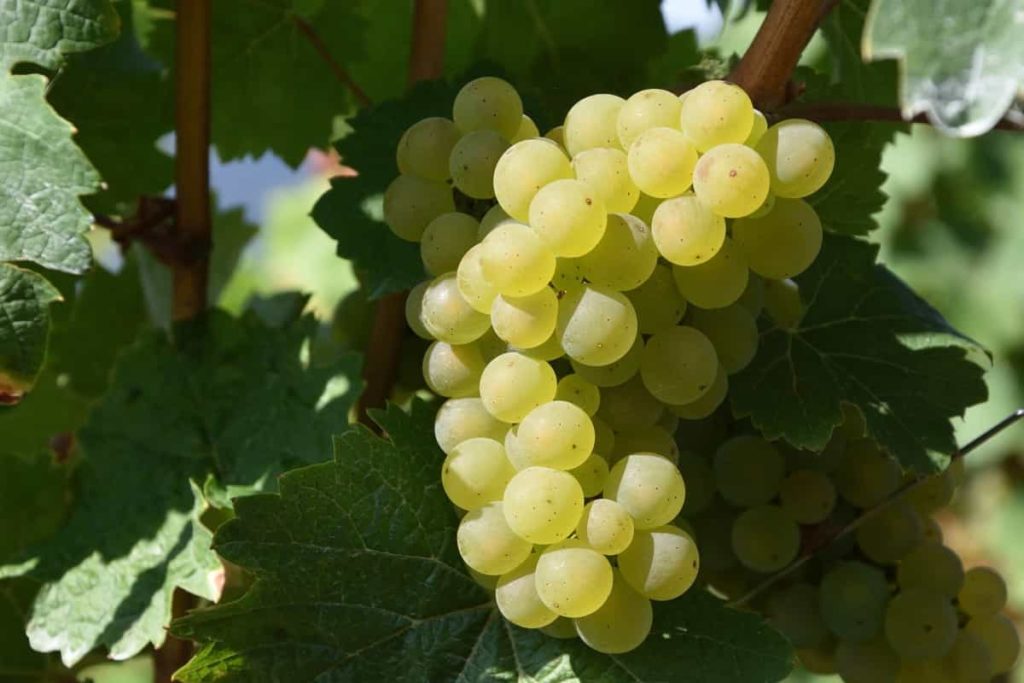
Most Grape yields are obtained on the most freely drained lands where nutrients and water are plentiful. Providing the proper nutrients positively affects Grape production. The financial survival of vine Grape growers depends on increasing unit production and reducing input costs. Pruning time, climate change during growth (temperature, humidity, and frost), and various chemicals to control diseases and pests determine the production quality. Good Grape bunches should be medium to large, without seeds.
Steps to boost Grape yield
Step 1: Choose the right site to plant
Grapevines grow best when planted in deep, well-drained sandy loam soils, and exposures from east to the south are required. Vineyards are preferred on mild to moderately sloping hilly terrain, as it helps to accelerate the drainage of water and cool, dense air to protect against frost. For Grapes farming, the soil (neutral pH of about 7 is the maximum), adding organic matter (fertilizer, manure, peat moss, etc.) is required and removing any weeds.
Step 2: Sun requirement for good fruit quality
It needs full sun for six to eight hours a day for better growth. Too little light will cause many problems like powdery mildew, low fruit production, and poor fruit quality.
Step 3: Soil for promoting fruit growth
Grapes need well-drained soil. The soil needs to have enough moisture to keep the Grapes happy, but too much water will have problems. However, Grapevines tolerate a large number of soil types. Limestone-rich or clay-filled soils, sandy loam, or loamy soils can change the taste of your final fruit.
In case you miss this: Growing Grapes In Greenhouse – Farming, Cultivation, Production In India
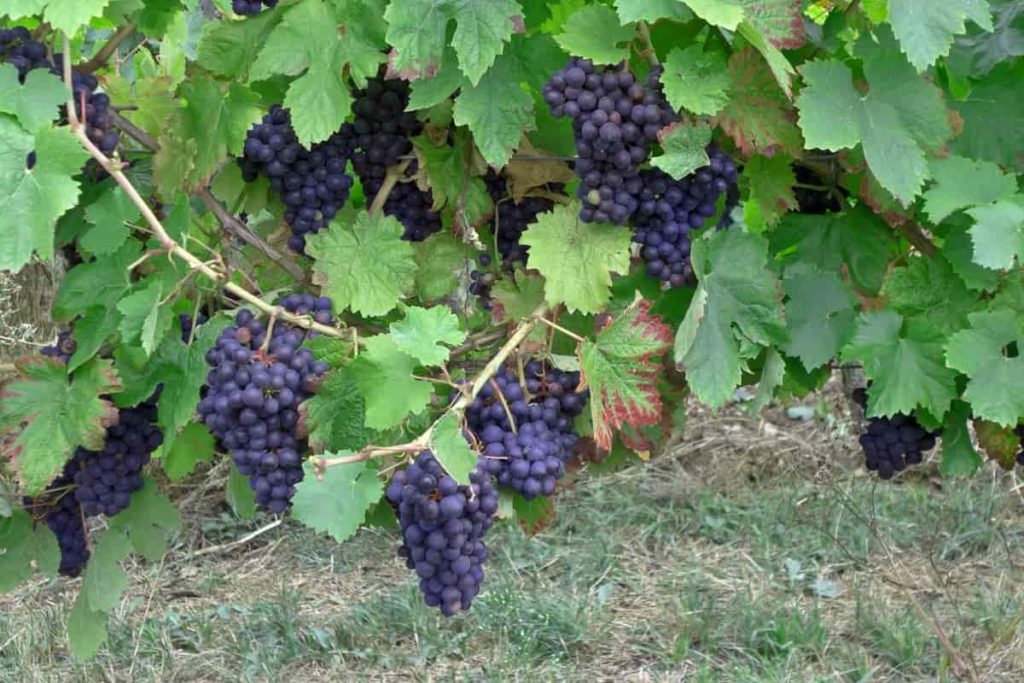
Step 4: Choose Grape varieties for your climate
There are many types of Grapes. Although they can be eaten technically fresh, vine Grapes are generally high in pulp to the skin, high in acid sugar, and have more seeds than table and juice Grapes. Some vine Grapes are thinner than others. Before planting, do your research on each Grape, consider what types of vines you want and what training and pruning they will need. They can produce good yield; some European Grape varieties like Chardonnay, Merlot, and Pinot Noir are susceptible to many diseases and are less tolerant of cold.
If you have never grown Grapes before, and mainly if you live in a place with humid summers or harsh winters, consider planting cold-hardy hybrid varieties such as Chambourcin, Marquette, Baco Noir, Vidal Blanc, or Chardonel. For more area advice, contact your local agricultural extension for what they recommend. Varieties like Perlette tolerate very compact bunches and require proper thinning of the berry for suitable berry and bunch growth. Removing the distal end of the bunch helps the beer to ripen evenly.
Step 5: Feeding the Grapevine plants
Higher yield production by controlling the number of bunches of Grapes and the size of the Grape berries. Even the berry size is desirable to ensure the maturity of the Grapes to maximize the yield per acre. Physical or nutritional crop manipulation is essential for berry size and market maturity. Like everything in a greenhouse, the more you put in, the more you get out, and the Grapes are no exception. They need a regular source of food to reward you. A well-balanced NPK fertilizer, or Growmore, for open ground can be applied in February or March before growth begins.
In case you miss this: Organic Grapes Farming, Growing Practices
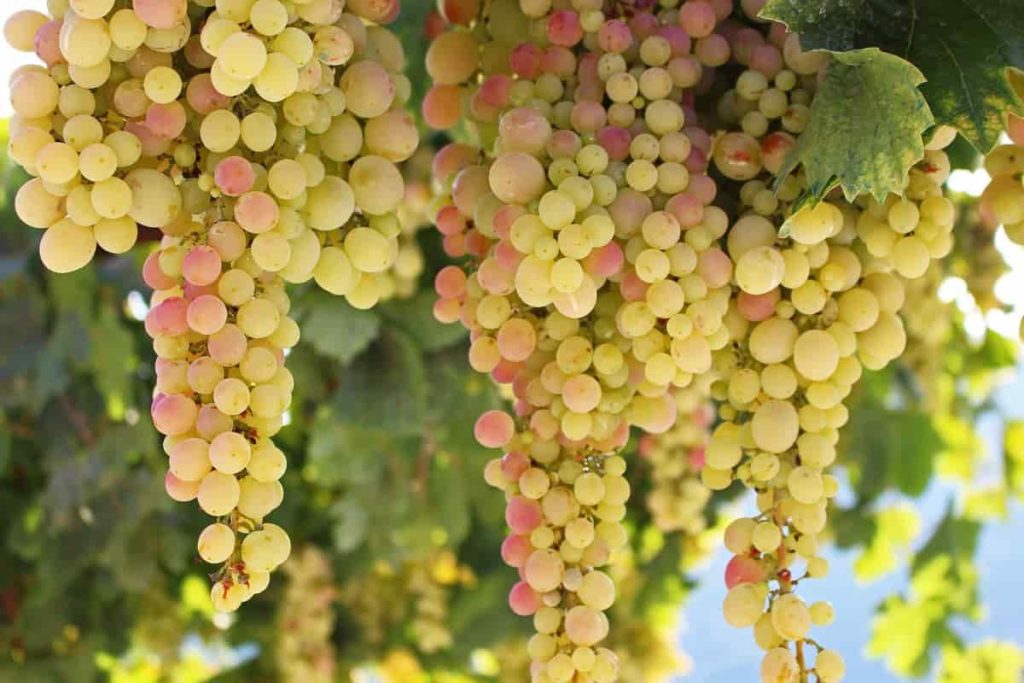
Step 6: Nutrients for improving fruit set
Nitrogen is one of the essential elements controlling Grape production. It promotes the early growth, strength, and weight of bunches and berries. Too much nitrogen can delay maturation and increase disease risk as Grapes are about to be harvested.
Step 7: Fertilizers for high yield and better berry growth
Large amounts of potassium are needed throughout the season, especially when adding sugar to fruit fillings. High potassium rates (600 kg/ha of K2O) nearly doubled production compared to untreated vines. Calcium is essential for the crop’s early and healthy growth, leading to high Grape crop yields.
Magnesium is required to maintain photosynthesis for high productivity. Of the micronutrients, boron and zinc are the most important for the final production in fruit set and need to be available in more significant quantities than other nutrients. To a lesser extent, iron and manganese are essential for early leaf production and photosynthesis to ensure better berry growth.
Step 8: Planting and season
Planting is usually done from October to January. Monsoon planting is avoided primarily to prevent diseases that affect young growth. Trenches are opened for planting in the N-S direction. The trenches are filled with FYM, organic manures, 5: 10: 5 organic mixtures, single superphosphates, bio-fertilizers, neem-cakes, etc. Spacing for planting depends on the type of soil, type, and training method. The distance between two rows can be 2 to 3 meters while the distance between oxen in one row will be half of that, in which oxen can be adjusted from 2000 to 5000 per hectare.
Step 9: Training improves crop yield
The Grapevines are trained first on bamboo and then on support like a trellis. A proper method of training is adopted. The vines are prepared with a single stalk on a tipping point at 2 meters. The primary arms are ready and trained in the opposite direction. Upon further tipping, secondary and tertiary components spread throughout the pandal.
In case you miss this: Best Fertilizer for Grapevines: Organic, Compost, Liquid, NPK, and Application
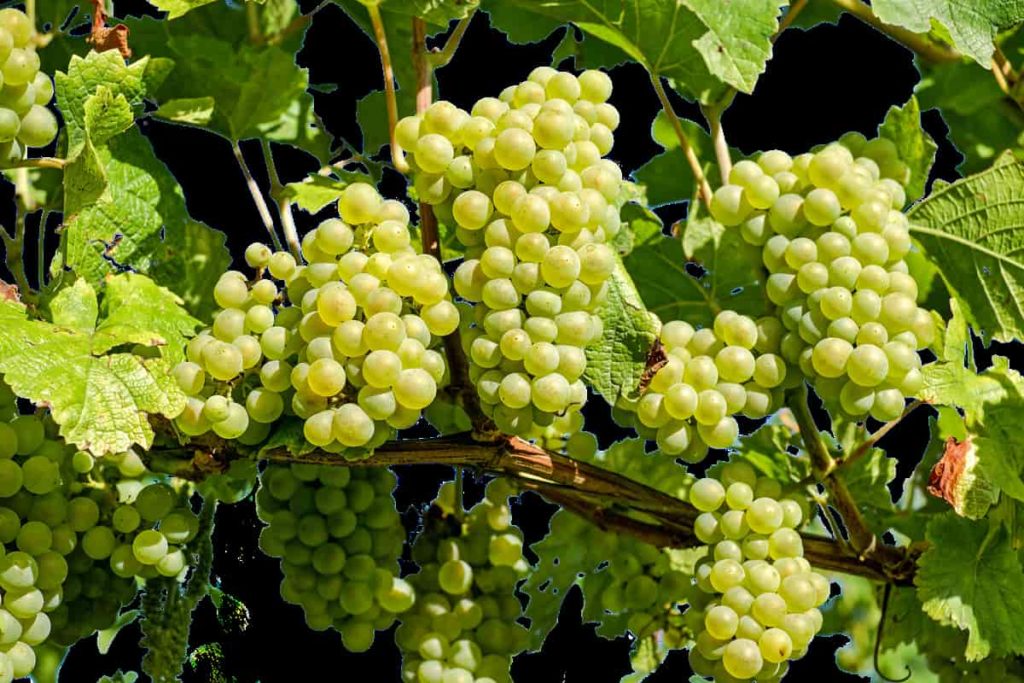
Step 10: Flowering stage
Flowering will occur once the temperature is consistently between 59-68F (usually 40-80 days after bud break). Primarily, it will appear as a button-like growth at the ends of new shoots. These initial clusters will turn into large flower clusters within a few weeks. During the flowering stage when the pollination occurs. Although most commercially grown Grapevines pollinate themselves, they are not wild and require insects to pollinate the flowers.
In addition, this stage is when fertilization and seed set, small dots are formed which become seeds. Heavy rains or wind can be a problem during this period, as fertilization is what causes future fruiting, and rain or wind can stop fertilizer. Also, high temperatures, low humidity, or drought conditions can cause a reduction in fertilization. During this stage, the young buds that will become the new growth of the following year begin to form. They will be delicate and small at first, a little more than hitting the joints of the previous shoots.
Step 11: Fruit set
The fruit set begins almost immediately as the flower subsides. Fertilized flowers will start to form small green berries in which the seeds will eventually grow fully. The average fertilization will vary between different Grape varieties, but usually, 30-60% of the flowers will be fertilized. The higher the number of flowers fertilized during the flowering stage, the more fruit your Grapes produce.
Flowers that did not become pollen and fertilizer during the flowering phase will wither and fall off during the fruit set. As the fruit ends, the final fruit will be green and hard to the touch. At the moment, it is inedible because it is unripe.
Step 12: Proper annual pruning increase the size of Grapes
Grape size is affected if not pruned annually to limit the number of fruit canes growing each year. If Grapevines grow without testing, Grape production and quality will decline. Annual pruning, which should eliminate about 90% of last season’s growth, is necessary to produce large Grapes.
Step 13: Thinning useful to reach the desired size
Grape bunches need to be thinned regularly to encourage large berries. Use nail scissors or special Grape scissors to remove nails and diseased Grapes. After picking the berries, continue to pull the Grapes until the rest of the flowers have reached the desired size.
In case you miss this: Role of Agriculture in Indian Economy
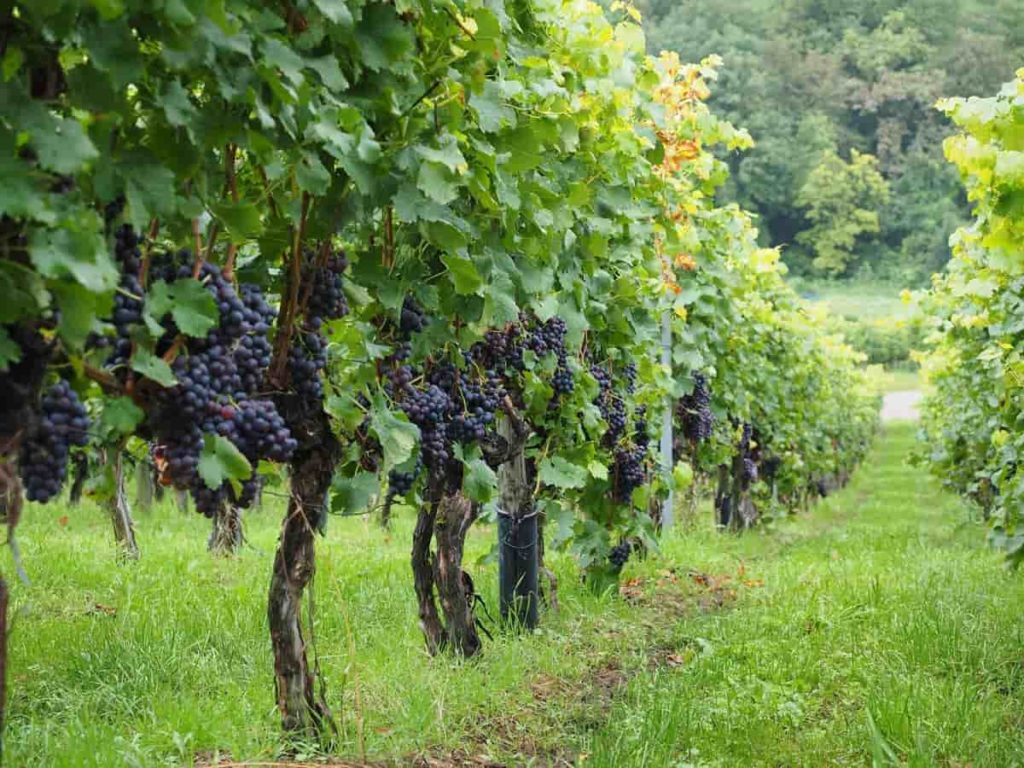
Cluster thinning
Grapes often produce more clusters of Grapes that the branch can grow properly. If you try to make all the clusters, the fruits are small and often have poor color and sweetness. Immediately after the flowers bloom and fall off, look at your vine and remove any defective clumps, too large or too small.
Then look at each branch and estimate how many bunches each shoot should successfully cultivate. For large Grapes, leave a few bunches. In young vines, leave only one bunch per branch. You can remove clusters to improve the size of the Grapes if you do this before the color of the growing Grapes.
Fruit thinning
The number of Grapes on each cluster makes the individual Grapes more significant. You will notice that some Grapes have so many fruits in a cluster that they are pressed together, and their growth is limited. Give Grapes a chance to grow and cluster to get more nutrients and water per Grape plant. Remove the lower half of the cluster, leaving four to five side branches near the top. Since these branches grow side by side with the main stem of the cluster, they can bear fruit without crowding.
Step 14: Increase the number of fruit canes per unit area (vines)
Grape is the fruit-bearing unit in Grapes; production depends on the number of fruit canes/unit area. The number of fruit-bearing canes the thickness of the cane determines the shoot length and the number of leaves cast on the bearing shoot during the fruiting season. Increasing the number of canes/unit areas adversely affects bud fruiting, cane size, and cane maturity.
Step 15: Increase berry size
Potassium increases berry size and uniformity and is also applied to improve skin color. Calcium sprays are directly on the fruit, especially during the ripening of the fruit at the end of the season, to strengthen the skin and improve the storage and handling properties. Zinc is involved in developing chloroplasts, so it is essential to improve the Grape’s quality. The use of zinc fertilizer resulted in increased sugar content and post-harvest weight loss.
Step 16: Grapes grow sweeter
Good soil, sun, and pruning are all part of the production of sweet Grapes. Most Grapes will grow well, but sweet Grapes need full sunshine at least 8 hours a day to produce sugar.
Step 17: Watering requirement for encouraging more berries
Water is valuable for Grapes as it promotes more sets and larger berries. Determining the right amount of water to grow Grapes can be difficult. Your soil should be moist but not wet because if the Grapes are too wet, they can spread diseases quickly. While Grapes are somewhat drought tolerant, they usually produce less fruit under water stress. The right amount of water is needed for good fruit production.
In case you miss this: Sustainable Urban Agriculture, Types, Principles
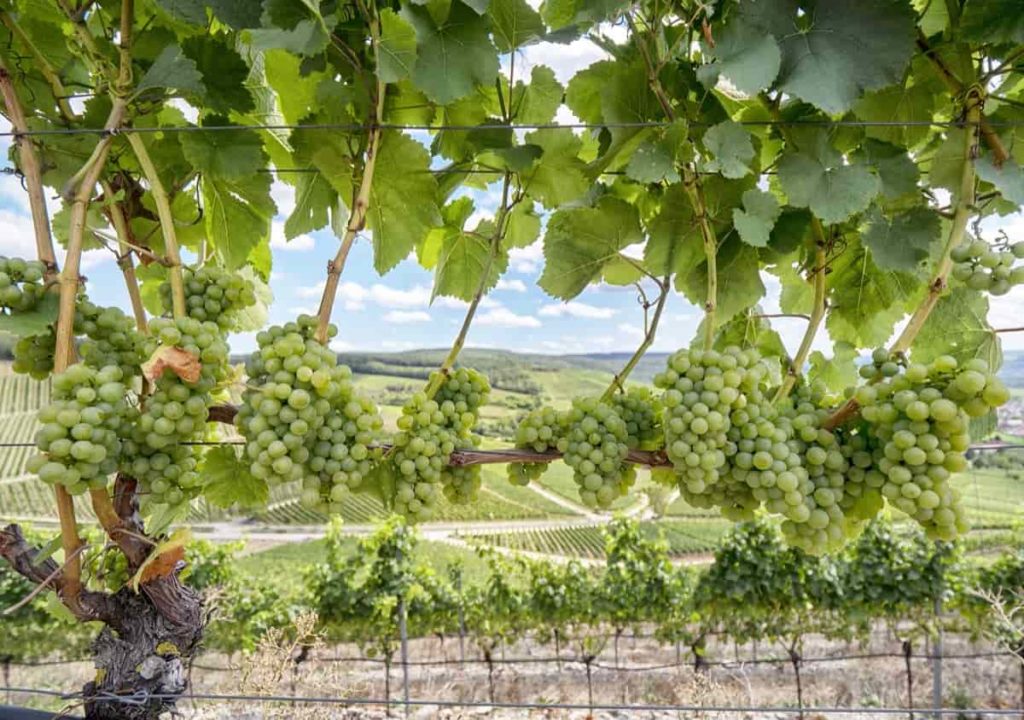
Step 18: Pest and disease control are essential for crop growth
Bore and beetles, along with other insects, sometimes attack the vine. Pick small numbers by hand and put them in a bucket of soapy water. Cut off the affected branches. If you have a severe pest attack, spray with horticulture soap. A fungal disease like powdery mildew and botrytis bunch rot can also affect Grapes. Proper pruning allows good air circulation to discourage these problems. Water your Grape roots, keep plants and branches dry and help avoid them.
Step 19: Carefully monitor pests and diseases
Insect pests are mainly observed flea beetle, thrips, and wasps. It is recommended to spray with Dichlorovas, Dimethoate & Endosulfan to control them. Diseases such as downy mildew, powdery mildew, black rot, wilt, leaf blight, etc., are suspected on the crop. For controlling these diseases, timely treatment and control measures are needed.
Step 20: Harvesting time will improve crop yield
Grapes will not continue ripening once picked from the vine. Grapes ripen and are ready for harvest when they are full of color, juicy, full of flavor, easily crushed but not shriveled, and plump. The Grape harvesting period usually begins 30-70 days after the fruit is set.
During this stage, typically have an increase in sugars and a decrease in acidity within the fruit. Soil type, environmental conditions, variety of spaces, and growing techniques all play a role in the quality of the final product. Producers harvest different varieties at different stages of maturity to achieve the desired quality characteristics.
- Economical Aquaculture: A Guide to Low-Budget Fish Farming
- 15 Common Planting Errors That Can Doom Your Fruit Trees
- How to Make Houseplants Bushy: Effective Tips and Ideas
- Innovative Strategies for Boosting Coconut Pollination and Yield
- Pollination Strategies for Maximum Pumpkin Yield
- The Complete Guide to Chicken Fattening: Strategies for Maximum Growth
- Natural Solutions for Tulip Problems: 100% Effective Remedies for Leaf and Bulb-Related Issues
- Revolutionizing Citrus Preservation: Towards a Healthier, Greener Future
- Natural Solutions for Peony Leaf and Flower Problems: 100% Effective Remedies
- Maximizing Profits with Avocado Contract Farming in India: A Comprehensive Guide
- Natural Solutions for Hydrangea Problems: 100% Effective Remedies for Leaf and Flowers
- The Ultimate Guide to Choosing the Perfect Foliage Friend: Bringing Life Indoors
- From Sunlight to Sustainability: 15 Ways to Use Solar Technology in Agriculture
- The Ultimate Guide to Dong Tao Chicken: Exploring from History to Raising
- The Eco-Friendly Makeover: How to Convert Your Unused Swimming Pool into a Fish Pond
- Mastering the Art of Delaware Chicken Farming: Essentials for Healthy Backyard Flocks
- 20 Best Homemade Fertilizers for Money Plant: DIY Recipes and Application Methods
- How to Craft a Comprehensive Free-Range Chicken Farming Business Plan
- Brighten Your Flock: Raising Easter Egger Chickens for Beauty and Bounty
- How to Optimize Your Poultry Egg Farm Business Plan with These Strategies
- Subsidy for Spirulina Cultivation: How Indian Government Schemes Encouraging Spirulina Farmers
- Ultimate Guide to Raising Dominique Chickens: Breeding, Feeding, Egg-Production, and Care
- Mastering the Art of Raising Jersey Giant Chickens: Care, Feeding, and More
- Ultimate Guide to Raising Legbar Chickens: Breeding, Farming Practices, Diet, Egg-Production
- How to Raise Welsummer Chickens: A Comprehensive Guide for Beginners
- How to Protect Indoor Plants in Winter: A Comprehensive Guide
- Ultimate Guide to Grow Bag Gardening: Tips, Tricks, and Planting Ideas for Urban Gardeners
- Guide to Lotus Cultivation: How to Propagate, Plant, Grow, Care, Cost, and Profit
- Agriculture Drone Subsidy Scheme: Government Kisan Subsidy, License, and How to Apply Online
- Ultimate Guide to Raising Araucana Chickens: Breed Profile, Farming Economics, Diet, and Care
- Bringing Hydroponics to Classroom: Importance, Benefits of Learning for School Students
- Ultimate Guide to Raising Polish Chickens: Breed Profile, Farming Economics, Diet, and Care
- Ultimate Guide to Raising Australorp Chickens: Profile, Farming Economics, Egg Production, Diet, and Care
- Silkie Chicken Farming: Raising Practices, Varieties, Egg Production, Diet, and Care
- Sussex Chicken Farming: Raising Practices, Varieties, Egg Production, Diet and Care
- Homemade Feed Formulations for Livestock: Discover Cost-effective Starter to Finisher Feed Recipes